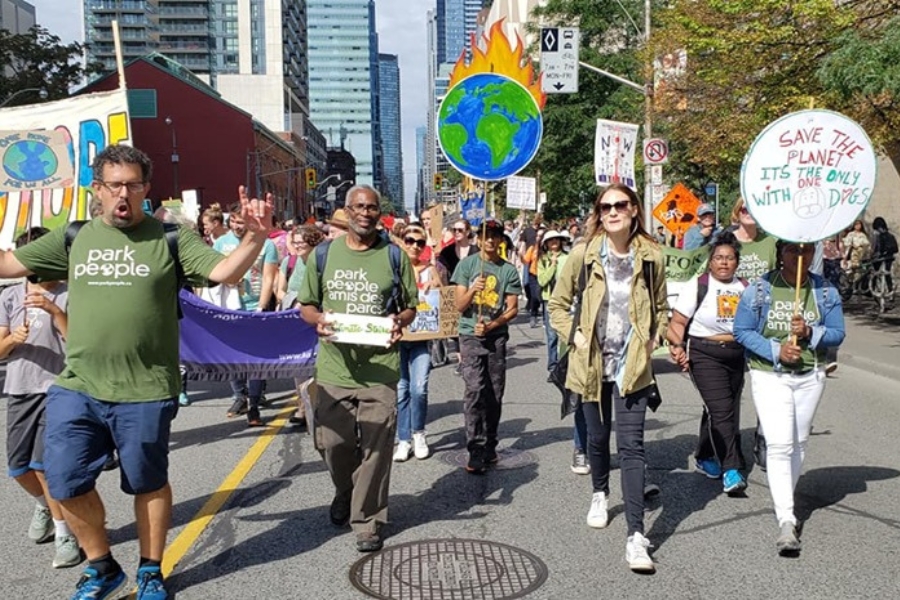By Dave Harvey, Founder, Park People
My retirement from the co-leadership position at Park People in June of this year had me considering the many positive changes that have happened in urban parks in Canada since I founded the organization in 2011 and the special role that Park People has played in advancing them. It’s been quite a journey for me, Park People, and Canada’s incredible ecosystem of city parks.
Since the very beginning, Park People’s work has been about creating new connections — between people and nature, between neighbours when they meet by chance in public spaces, and between leaders and bold ideas that can make our parks even better.
Park People’s own origin story echoes this theme brilliantly. In 2009, I received a Fellowship from the Metcalf Foundation to research the state of Toronto’s parks and examine opportunities for improvements. I will always be grateful to former Metcalf President Sandy Houston for believing in me and the capacity of city parks to improve the lives of Canadians.
The result of the Fellowship was a paper that was released in 2010 — “Fertile Ground for New Thinking.” Its final recommendation was to start a park-focused NGO in the city. At the time, I had absolutely no intention to start or lead such a group, but an enthusiastic group of people were inspired by the paper and pushed me to start an NGO. In return, I cajoled them into becoming our founding board members and volunteers. We then embarked on a bold plan to support more people to see themselves as park leaders and to connect them to the tools they would need to create great parks for everyone.
With some initial generous support from the Metcalf Foundation, on April 12, 2011, we officially launched Park People with our Toronto Park Summit. This was our first opportunity to connect park professionals and emerging advocates in our city. Through these lively conversations, we began building the collective power required to support and sustain vibrant green spaces that all urban residents can enjoy.
In the years since our original group of board members and volunteers has expanded exponentially: Park People now has more than 25 staff members, offices in Vancouver, Toronto, and Montreal, and a national board of city and community builders. We’ve also engaged thousands of new supporters — our Park People Network now unites 1,400 local park groups in 35 cities in every province, and we’ve provided grants to grassroots community leaders to animate their parks in 21 urban areas.










